

If you caught my last post about my top 10 books about patterns in math, you know that patterns aren’t just a one-grade-deal in the Common Core State Standards. Nope, it’s even better than that! Patterns are found in the math practice standards, which means that we should be teaching students to look out for patterns in math all the time!
If you were to randomly survey people and ask them what patterns are, I’d be willing to bet that almost all of them describe repeating patterns. But guess what, there’s more to patterns than that! There are also growing patterns and numerical patterns. What’s more, repeating and growing patterns are often represented visually but they can also be auditory. We can find patterns in sounds like in music, knocks, or even poems. Patterns are just sequences that have some predictability and follow a rule of some sort.
So, let’s go beyond the book list and really delve into repeating and growing patterns in math!
Repeating Patterns in Math
Repeating patterns feature a sequence of items that, you guessed it, repeat. These patterns can be anything – sounds, words, colors, shapes, whatever! Let’s take a look at an example:
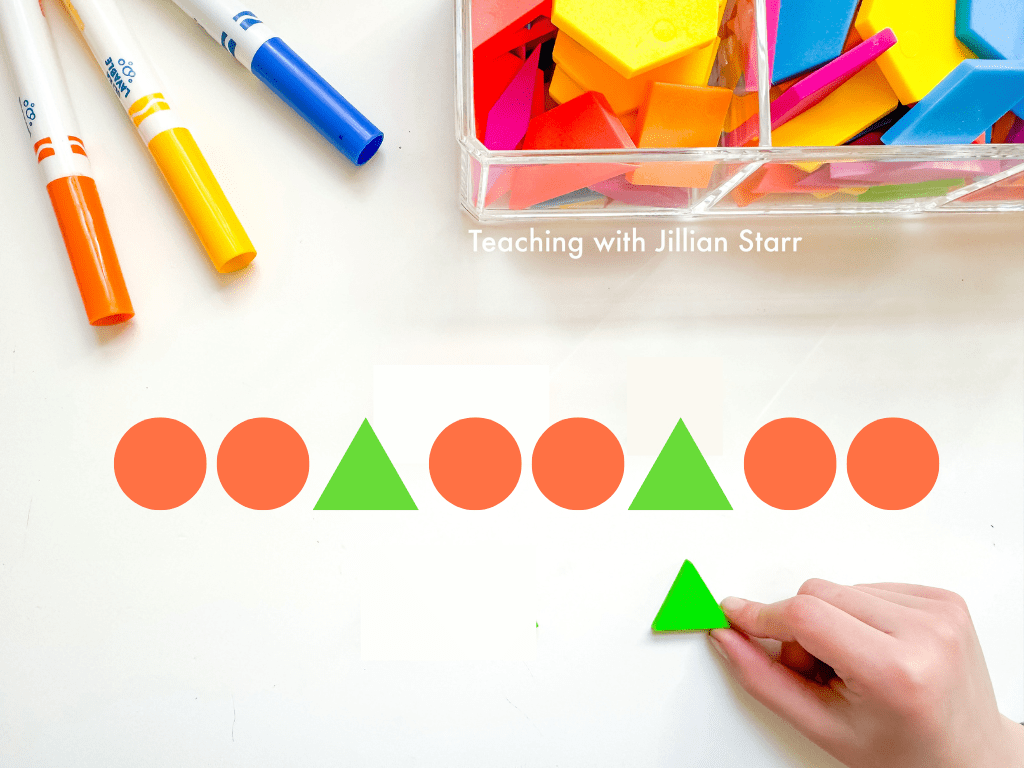

The part of the pattern that stays the same is called the core and the core is made up of different items. So in the case of our pattern above, the items are circles and triangles. The core here is circle, circle, triangle, which repeats to make up the pattern.
I’ll be real – describing that pattern was not the easiest to do with just words! Lucky for us, we describe patterns in math algebraically by using letters to represent the items that make up the core. So for our circle and triangle repeating pattern, we can call it an AAB repeating pattern – where A represents the circle and B represents the triangle.
Growing Patterns in Math
Unlike repeating patterns that are just on repeat with no changes, growing patterns increase or decrease by a specific amount. Here’s an example of a growing pattern in math:


This pattern starts off with one dot that then “grows” as we go along. The second part of the pattern has four dots in the shape of a square and the third has nine dots in the shape of a square. Can you predict what the next part of the pattern would be?
What makes growing patterns so fun for kids is predicting the next part! They love to continue growing patterns in math but sometimes kids need a little nudge to help them see how the pattern changes. That’s when I pull out these questions:
- How did the pattern change from the first part to the second?
- What about the second to the third?
- What comes next?
- What is the rule?
That last question asks students what the pattern’s “rule” is. For young students, I just expect them to say something like “Each time it’s a square and it has an extra dot on each side.” We can guide them to be more precise with their language but if they can see and describe how the pattern changes, they are demonstrating readiness to extend that pattern, analyze other patterns, and even make their own patterns!
We’ll dig more into how to teach patterns in math next. A lot of the same activities and approaches work for both repeating and growing patterns in math. We love a 2-for-1!
Activities to Teach Patterns in Math
When teaching patterns in math, we want kids to not only recognize patterns in math, but also describe them, reproduce them, extend them, find missing pieces, and create their own patterns. Why? Because these skills transfer to all math work in general. If students can describe patterns and extend them, then they will be more able to notice patterns in a hundred chart, like how the tens place goes up by one as we look down (or up!) the chart, and then extend that to explore even larger numbers.
So, let’s go beyond the worksheet when teaching patterns to get kids really digging into those math practices. Worksheets have a place in teaching, of course, but patterns are the backbone of math, so we want kids to be fully engaged when learning about patterns.
Sorting and Classifying
A big part of understanding patterns is being able to understand how things go together. To help build this skill, have students work on sorting and classifying. If your students are anything like my kids, they are naturals at this! We just have to provide the opportunities. Let them loose to “play” with manipulatives like counting bears, linking shapes, and linking cubes. Ask them to sort them in any way they want and have students describe how they sorted their objects.
Hula Hoops
Another fun twist on sorting and classifying? Hula hoops! Lay them side by side or create a giant Venn diagram. Then after giving directions about how the hula hoops will work, sort the objects – truly any objects! – into two groups. Here’s the twist: don’t tell kids how you are sorting them. Instead, they have to analyze what you’ve done and guess how you sorted. Then let the kids have a turn! They sort and the rest of the class tries to figure out how that student sorted. It’s so fun that the kids completely forget they are learning!
Patterns, Patterns Everywhere!
Teaching students about patterns doesn’t have to stop at math class or even one lesson. Patterns are literally everywhere and I can (almost!) guarantee that if you look around you right now as you are reading this, you’ll see a pattern.
Keep an eye out for patterns within the classroom and all of the content areas that you teach and clue your students in too. Use those teachable moments to have students describe patterns and even extend them. For example, one of my old classrooms had a patterned tile floor. I’d ask the kids to check it out and describe the pattern. To extend that, students continue the pattern and describe how it continues into the hallway or they’d design their own floor patterns.
Even more, look for patterns outside of math too! Of course, patterns are all over poetry and you’ll find them in science too. Noticing patterns outside of math will help students see the bigger picture and gain a deeper understanding of how all of those things work.
Bonus Pattern Books
Of course, books! You may have already seen my list of books about patterns in math, but I have some bonus picks for you today.
How Many Feet In the Bed? by Diane Johnston Hamm is perfect for teaching growing patterns in math. At first glance, the text does not make the growing pattern obvious, but as each person gets into bed the number of feet in the bed increases by 2. That’s the rule of the growing pattern! As I read this book to students, I like to write down how many feet are in the bed.


When we finish reading, we look at the pattern together. We’ll talk about how the pattern grows and extend it. I’ll ask students, “How many people would be in bed if there were 12 feet in the bed?” or “How many feet would be in the bed if there were 10 people in bed?” Hello, multiplication connection!
For repeating patterns, Bracelets for Bina’s Brothers is a great addition to your bookshelf. In this story, Bina is making bracelets for her brothers using beads. The story explicitly describes the patterns Bina uses to make the bracelets. Two of the bracelets follow an AB pattern but then she makes the third using an AABB pattern.
Throughout the book, there are repeating patterns in the illustrations, from the pattern in a shirt to the tassels on a rug. There is so much for kids to notice! Have kids point out any patterns they notice and have them describe and extend them.
Patterns are so central to math that they are a part of the math practice standards, putting them front and center in everything we teach in math. We can teach patterns explicitly, sure, but we can (and should!) also help students see that patterns are truly everywhere, even beyond math. Patterns help us to make sense of the world and give it a sense of predictability. Plus, they are just plain fun!
Do you have any other fun ways to teach patterns in math? I’m all ears!

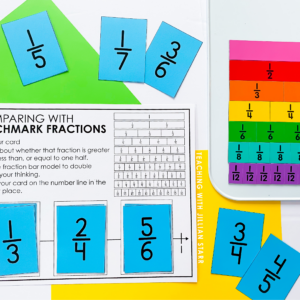
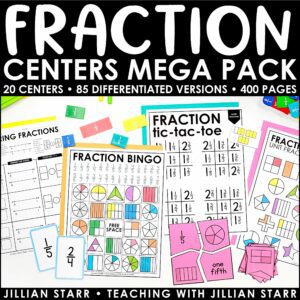
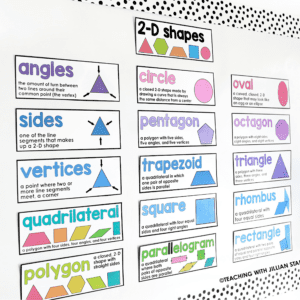
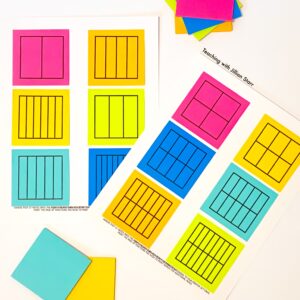
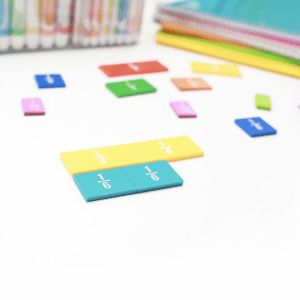
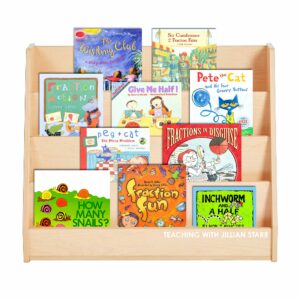



Leave a Comment